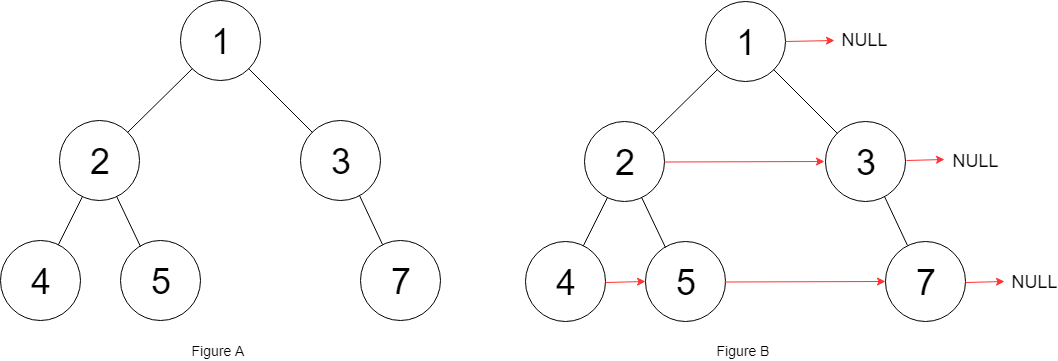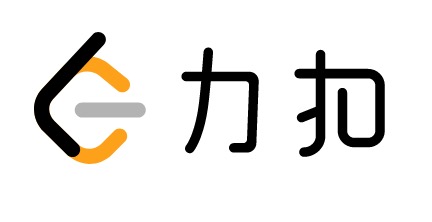1 问题
给定一个二叉树:
struct Node {
int val;
Node *left;
Node *right;
Node *next;
}填充它的每个 next 指针,让这个指针指向其下一个右侧节点。如果找不到下一个右侧节点,则将 next 指针设置为 NULL 。
初始状态下,所有next 指针都被设置为 NULL 。
示例 1

输入:root = [1,2,3,4,5,null,7]
输出:[1,#,2,3,#,4,5,7,#]
解释:给定二叉树如图 A 所示,你的函数应该填充它的每个 next 指针,以指向其下一个右侧节点,如图 B 所示。序列化输出按层序遍历顺序(由 next 指针连接),’#’ 表示每层的末尾。
示例 2
输入:root = []
输出:[]
提示
树中的节点数在范围 [0, 6000] 内
-100 <= Node.val <= 100
进阶
你只能使用常量级额外空间。
使用递归解题也符合要求,本题中递归程序的隐式栈空间不计入额外空间复杂度。
2 解题思路
本题与【LeetCode】116. 填充每个节点的下一个右侧节点指针 唯一区别就是,该二叉树不是一个perfect binary tree。
关于
二叉树类型,可以参考K神文章中的定义常见二叉树类型 ,也可参考传统教材严蔚敏和吴伟民老师编写的《数据结构(C 语言版)》。
所以运用其中的深度优先(DFS)算法失了效果。但是采用BFS还是可以的。并且可以改进下遍历过程中的指针指向,不用单独再遍历每层指针,操作其nexe指向其下一个节点。
3 代码
3.1 老式BFS
class Solution {
public Node connect(Node root) {
//this tree is not a perfect binary tree, which is the biggest difference in LC116
//BFS
if (null == root) {
return root;
}
Queue<Node> q = new LinkedList<>();
Node tmp;
List<Node> rowList = new ArrayList<>();
//in Queue
q.offer(root);
//flag of each level
q.offer(null);
int i = 0;
while (!q.isEmpty()) {
//pop
tmp = q.poll();
if (null != tmp) {
rowList.add(tmp);
//left node in Queue
if (null != tmp.left) {
q.offer(tmp.left);
}
//right node in Queue
if (null != tmp.right) {
q.offer(tmp.right);
}
}
//end of this row's traversal
else if (!rowList.isEmpty()) {
//Populating Next Right Pointers in Each Node of this row
for (i = 0; i < rowList.size() - 1; i++) {
rowList.get(i).next = rowList.get(i + 1);
}
rowList.get(rowList.size() - 1).next = null;
rowList = new ArrayList<>();
q.offer(null);
}
}//end of while
return root;
}
}3.2 新式BFS
class Solution {
public Node connect(Node root) {
if (null == root) {
return root;
}
Queue<Node> q = new LinkedList<>();
Node tmp;
//in Queue
q.offer(root);
//flag of each level
q.offer(null);
while (!q.isEmpty()) {
tmp = q.poll();
if (null != tmp) {
//the next node is the node in the queue's head
tmp.next = q.peek();
//left node in Queue
if (null != tmp.left) {
q.offer(tmp.left);
}
//right node in Queue
if (null != tmp.right) {
q.offer(tmp.right);
}
}
//the end of this level
else if (!q.isEmpty()) {
q.offer(null);
}
}
return root;
}
}


